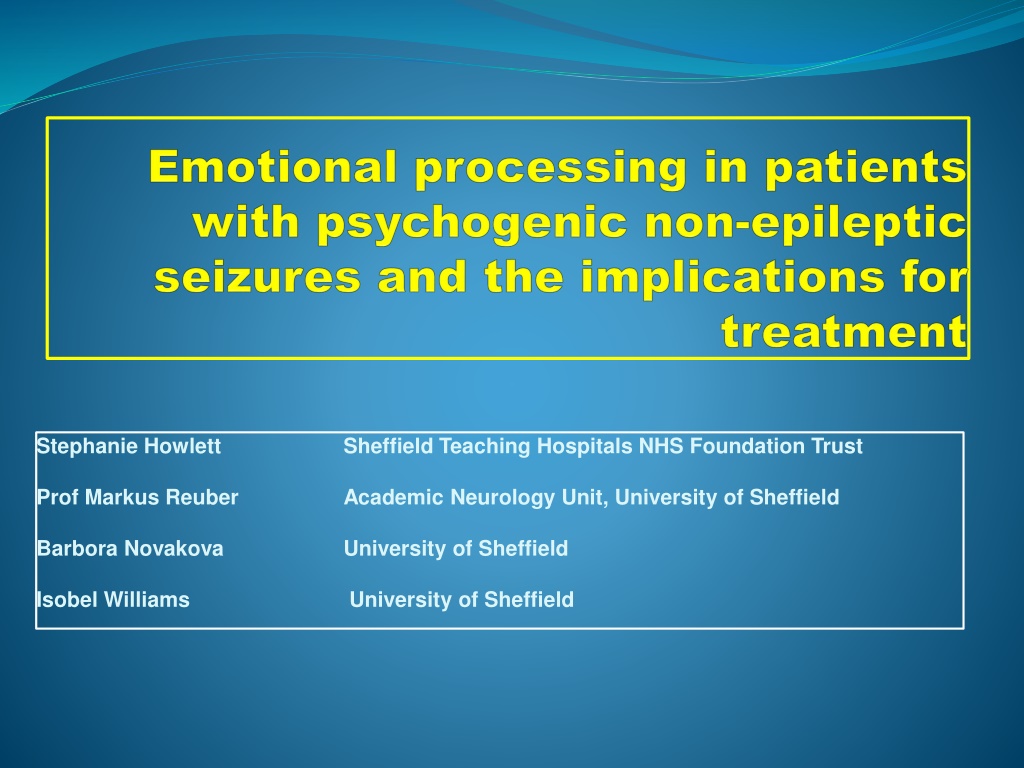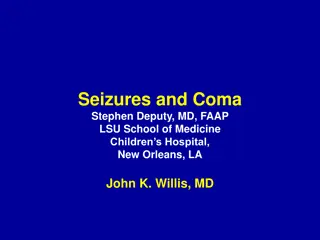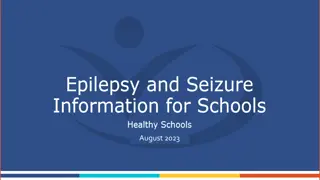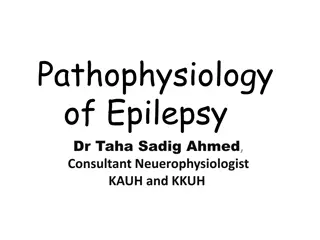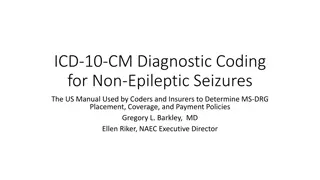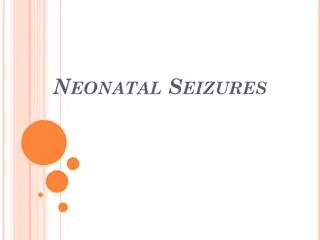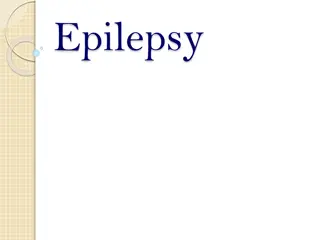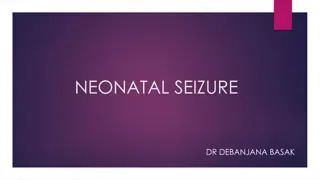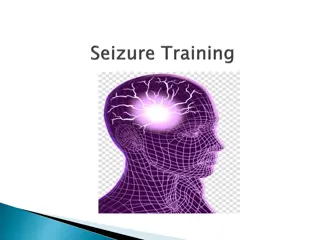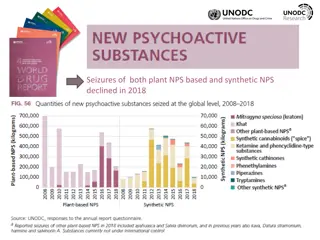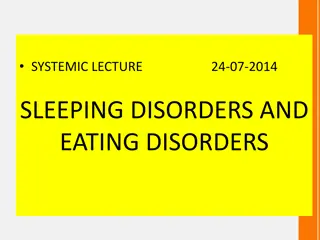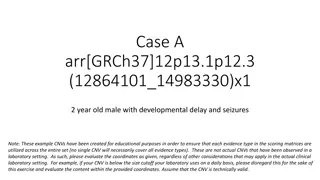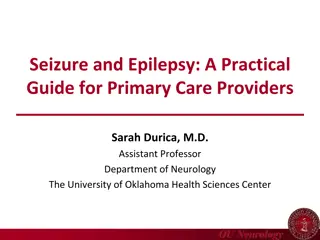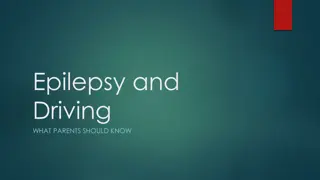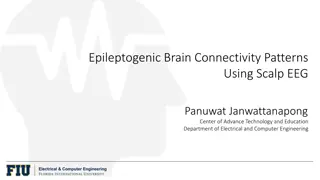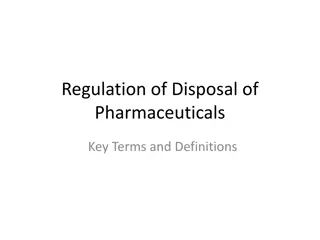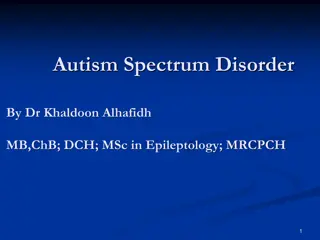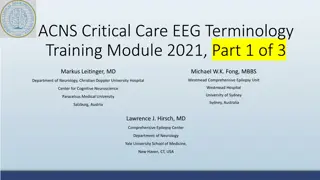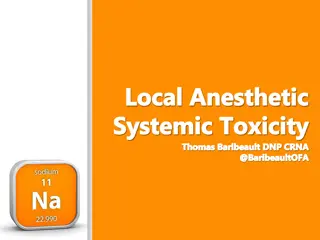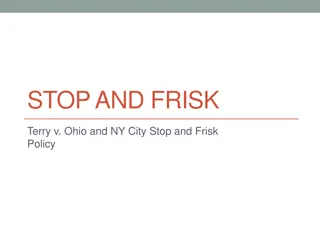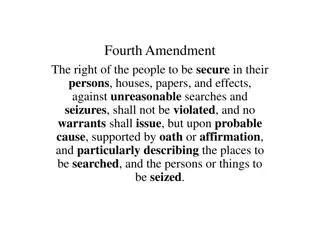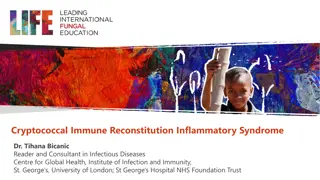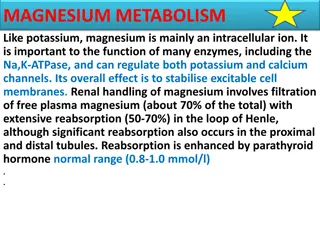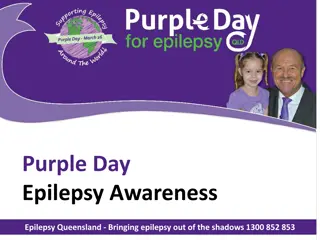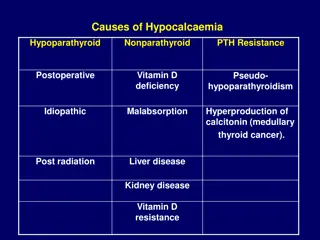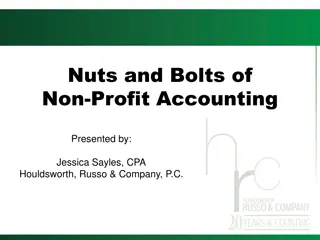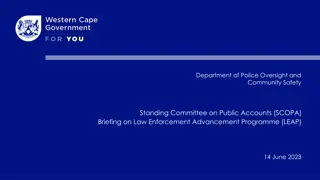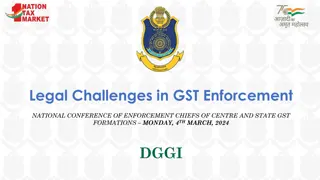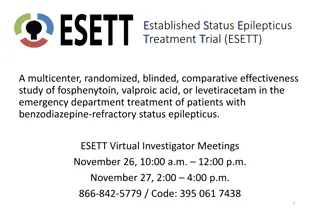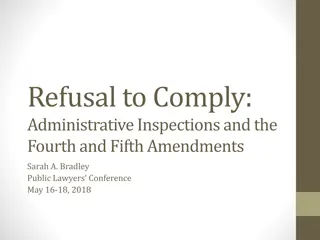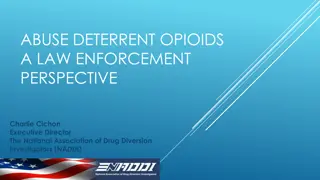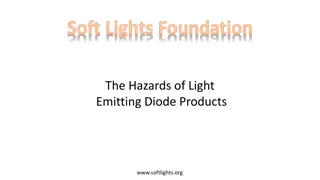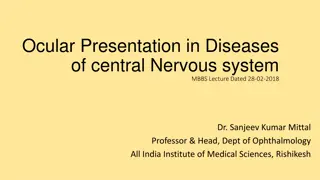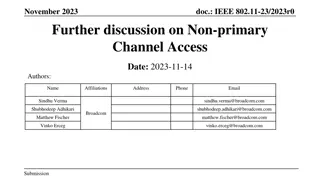Understanding Psychogenic Non-epileptic Seizures: A Comprehensive Overview
Sheffield Teaching Hospitals NHS Foundation Trust offers a specialist neurology psychotherapy service for patients with functional neurological symptoms. The service, established in 2003, provides brief psychotherapy sessions to patients referred by consultant neurologists. The approach includes studying emotional processing and baselining data related to psychogenic non-epileptic seizures (PNES). The service focuses on identifying the underlying psychological factors contributing to PNES, such as trauma history, emotional processing difficulties, and social conflicts.
Download Presentation

Please find below an Image/Link to download the presentation.
The content on the website is provided AS IS for your information and personal use only. It may not be sold, licensed, or shared on other websites without obtaining consent from the author. Download presentation by click this link. If you encounter any issues during the download, it is possible that the publisher has removed the file from their server.
E N D
Presentation Transcript
Stephanie Howlett Sheffield Teaching Hospitals NHS Foundation Trust Prof Markus Reuber Academic Neurology Unit, University of Sheffield Barbora Novakova University of Sheffield Isobel Williams University of Sheffield
Sheffield specialist neurology psychotherapy service Established 2003 Located within Department of Neurology Offers brief (< 20 sessions) psychotherapy to patients diagnosed with Functional Neurological Symptoms Current establishment 6 x full or p/t psychotherapists + 1 team leader Patients referred by consultant neurologists who keep patient on their caseload and review after psychotherapy
Outline Psychogenic non-epileptic seizures (PNES) background information Therapeutic approach Study of emotional processing and PNES baseline data Case vignettes Preliminary outcome data
Definition (Psychogenic) non-epileptic seizures superficially resemble epileptic seizures but are not associated with abnormal electrical activity in the brain. They are episodes of paroxysmal impairment of self- control associated with a range of motor, sensory, and mental manifestations, which represent an experiential or behavioural response to distress 1 1Reuber M and Mayor R , Recent progress in the understanding and treatment of nonepileptic seizures. Curr Opin Psychiatry 2012, 25:244-250
Psychogenic non-epileptic seizures Also known as: Dissociative seizures Non epileptic attack disorder Non-epileptic seizures Functional seizures Psychogenic seizures Pseudo-seizures* Hysterical seizures* * The last two terms have been used historically and may still be encountered but are now considered derogatory and should not be used.
Aetiology History of psychological trauma current tendency to autonomic disregulation or dissociation History of developmental trauma attachment and interpersonal difficulties Life threatening medical illness Difficulties with emotional processing Emotional avoidance Lack of emotional awareness Marked emotional disregulation Current social factors, conflicts and pressures Organic neurological deficits, e.g. head injuries or intellectual disability1 1Reuber M et al. Evidence of brain abnormality in patients with psychogenic non- epileptic seizures.
Augmented model of psychodynamic interpersonal processing for FNS1 Based on Psychodynamic Interpersonal (PI) therapy1 and adaptation to work with psychogenic somatic illness2 Augmented to work with different challenges presented by PNES3 Assumption that symptoms arise from/exacerbated by faulty patterns of emotional processing and interpersonal relationships, and trauma reactions arising from past experiences 1Hobson, R.F. (1985) Forms of Feeling. London: Tavistock 2Creed, F. et al. (2003). The cost-effectiveness of psychotherapy and paroxetine for severe irritable bowel syndrome. Gastroenterolgy, 124, 303-317. 3Howlett S & Reuber M. (2009) An augmented model of brief psychodynamic interpersonal therapy for patients with non-epileptic seizures. Psychotherapy theory, Research, Practice, Training. 46(1), 125- 138.
Key features Patients encouraged to: Develop more effective interpersonal and emotional processing patterns Stay with feelings Notice and understand somatic imprint of emotions Staged therapy to treat trauma based on somatic trauma therapy models
PNES and emotional processing PNES has been associated with difficulties in EP including: Abnormalities in EP in relation to healthy controls, patients with epilepsy and heathy controls with a history of trauma. high levels of alexithymia1 Avoidance including emotional avoidance2 1 Myers, L et al. Prevalence of alexithymia in patients with psychogenic non- epileptic seizures and epileptic seizures and predictors in in psychogenic non- epileptic seizures. Epilepsy Behav 2013;26:153-7 2 Dimaro, L.V. et al. Anxiety and avoidance in psychogenic nonepileptic seizures: The role of implicit and explicit anxiety. Epilepsy Behav 2014;33: 77-86
Emotion processing and PNES: a cross-sectional comparison of patients and healthy controls1 To describe the EP styles of PNES patients(n=50) compared to healthy controls (n=224) To explore associations of EP with other psychological measures and seizure frequency using the EPS-25 1. 2. 1Novakova B, Howlett S, Baker R, Reuber R. Emotion Processing and Psychogenic Non-epileptic Seizures: a cross-sectional comparison of patients and healthy controls. Seizure 2015 Jul;29:4-10
Study of Emotional Processing and PNES Measures administered to patients immediately before starting psychotherapy EPS-25 Emotional processing CORE-10 Psychological distress SF-36 Health related quality of life PHQ-15 Physical symptoms BIPQ Illness perceptions Seizure frequency self-reported
EP in PNES patients vs healthy controls 50 PNES patients 224 Healthy Controls Mann-Whitney U test demonstrated significant differences in: Total EPS All EPS sub-scores
EP and seizure frequency Median EPS scores in the different seizure frequency categories Kruskal-Wallis test. Seizure Category More than 1 seizure/week but less than 1 seizure/day M (IQR) P-values More than 1 seizure/month but less than 1 seizure/week M (IQR) More than 1 seizure/day but less than 1 seizure/hour M (IQR) N 15 15 12 Suppression 7.2 (3.00) 5.80 (6.60) 7.30 (2.70) n.s. Unprocessed Emotion 6.4 (2.20) 5.00 (6.80) 6.70 (2.35) n.s. Unregulated Emotion 5.60 (2.60) 4.40 (5.00) 3.80 (1.45) .049 Avoidance 6.40 (3.40) 4.80 (3.40) 6.20 (2.25) n.s. Impoverished Emotional Experience 5.00 (3.00) 3.80 (5.40) 5.20 (3.40) n.s. Total EPS 6.12 (2.16) 4.32 (5.70) 6.20 (1.91) n.s. Note. M = median, IQR = interquartile range.
Total EPS scores and other measures Correlations between the total EPS score and the PHQ-15, CORE-10, BIPQ, and the MHS and PHS summary sub-scales of the SF-36. SF-36 MHS EPS PHQ-15 CORE-10 BIPQ SF-36 PHS EPS PHQ-15 .473* CORE-10 .723* .591* BIPQ .475* .582* .723* SF-36 MHS -.702* -.478* -.809* -.697* SF-36 PHS -0.088 -.476* -0.085 -.442* 0.031 NB * Correlation is significant at the 0.01 level.
Conclusions PNES patients show clear deficits in all aspects of emotional processing compared to healthy controls Impaired EP in patients with PNES correlates with Psychological distress A more threatening view of their symptoms A greater number and severity of other physical symptoms Reduced mental health functioning. No clear link found with Seizure frequency Physical functioning
Patients with very low EPS scores Lowest 10% on EPS scores: Scores indicate no difficulties with EP Clinical impressions Emotionally flat and inaccessible Difficult to engage in psychotherapy N = 3, had frequent accidents affecting mobility and periods of hospitalisation as children N=3, wheelchair bound, life of disability and dependence Preliminary outcome data: Got worse on EPS, CORE-10, MHS. Is worse really better? Got better on PHQ 15, Illness perceptions, slightly better on PHS
Outcome data for all FNS1 Median (IQR) N Pre-intervention Post-intervention P value EPS-25 total 44 5.40 (3.35) 4.64 (3.44) .034* EPS-25 subscales Suppression 44 6.00 (4.10) 4.90 (4.10) .058 Unprocessed emotion 44 6.20 (4.80) 5.00 (4.85) .016* Unregulated emotion 44 4.40 (3.80) 4.10 (3.85) .321 Avoidance 44 5.20 (3.49) 4.90 (3.35) .143 Impoverished emotional experience 44 4.50 (4.30) 3.60 (3.80) .050* SF36 Physical health summary score 39 32.87 (19.10) 35.69 (18.80) .180 Mental health summary score 39 39.31(12.89) 39.93 (18.00) .076 Other clinical symptomology scales Mean (SD) CORE-10 43 19.19 (9.39) 17.05 (10.43) .130 BIPQ 35 55.51 (11.84) 48.83 (15.79) .012* PHQ-15 37 14.05 (5.35) 12.14 (6.32) .026* *=p .05 (two-tailed). CORE-10 = Core Outcome in Routine Evaluation-10, BIPQ= Brief Illness Perceptions Questionnaire, PHQ-15= Patient Health Questionnaire- 15 1 Williams, I. Unpublished data for PhD thesis.
